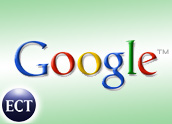
Google is expanding the size and scope of its newspaper advertising program to include users of its online AdWords service.
In the immediate term, the expansion will increase the number of marketers using Google’s Print Ads service. In the long run, the move could help meld the once-disparate audiences to create even larger efficiencies of scale. It would also give the print advertising industry a much-needed boost.
“Google’s strategy has been to concentrate on online advertising and evolve it into print advertising,” said Dave Dabbah, vice president of marketing at J.L. Halsey Corporation, which oversees the company’s group of five e-marketing companies including Lyris, Hot Banana and Clicktrack.
Merging online and print ad services, he said, is a reflection of where the industry appears to be heading.
Coattail Strategy
“We focus on the SMB (small and medium-sized business) market. Our clients are starting to use our e-mail marketing solutions now as a complement to print ads instead of to their exclusion,” Dabbah told the E-Commerce Times.
It is easy to understand why the online strategy is taking center stage. Internet advertising rose at annual rates in excess of 30 percent during each of the past three years, including a 33.9 percent gain in 2006 to US$16.8 billion, according to PricewaterhouseCoopers Global Entertainment and Media Outlook: 2007-2011.
Keyword search advertising spending, the firm predicted, will more than double during the next five years to $14.5 billion, a 16.6 percent compound annual increase. Online advertising as a whole will increase from $16.8 billion in 2006 to $35.4 billion in 2011, growing at a 16.1 percent compound annual rate.
Now, Google is trying to attach its Print Ads program to the online ad growth engine.
“Over the past months, we have worked closely with our newspaper partners to design our Print Ads program to meet their needs and the needs of marketers,” stated Eric Schmidt, Google’s chief executive officer. “Newspapers are an important source of information and a powerful communication tool. With Google Print Ads, we will bring more advertisers to newspapers, which will ultimately benefit readers, publishers and advertisers.”
The Google Print Ads advertising initiative started in November 2006 with a test that included 50 newspapers and a small group of advertisers.
Its launch enabled agencies and advertisers to plan and buy traditional newspaper media in both national and local newspapers through a single, Web-enabled interface.
Since then, the program has expanded to reach more than 225 newspapers — including publications of E.W. Scripps, Freedom Communications, Hearst Newspapers, GateHouse Media, Gannett, MediaNews Group, The New York Times Company, The Seattle Times Company, Tribune Publishing and The Washington Post Company — that represent a combined circulation of almost 30 million.
Who Benefits
In the immediate term, the expansion will help the Print Ads program customers — that is, the print publishing industry — which, in this instance, has been able to leverage the efficiencies of the Internet in its favor.
“Google Print Ads has brought in new advertisers who were either too small to consider advertising in a national newspaper or who hadn’t tried print advertising because their business was largely online,” said Todd Haskell, vice president of business development for advertising at The New York Times. “And Google Print Ads gives us the flexibility and control to set our own pricing, so there is never a conflict.”
What Google is bringing to the table with this expansion, according to Tim Vanderhook, CEO and cofounder of online ad network Specific Media, is greater demand.
“With hundreds of thousands of advertiser relationships through their AdWords system, Google has the ability to make a significant impact on the newspaper industry’s revenue simply by bringing new advertisers to the table,” he told the E-Commerce Times. “Increased demand always drives up pricing in a marketplace environment, and Google is betting they have the ability to do that. I tend to believe them.”
Direct marketers are also beneficiaries of the Google program expansion.
“We do a lot of offline as well as online marketing, and there has always been a portion of the print market that has remain stubbornly paper-based,” Eric Obeck, president SendTec, told the E-Commerce Times.
This change, he said, is bringing the ad sales business model closer to a fully automated one.
“It’s an exciting time in the industry — almost as exciting as when online ad models first started to develop,” J.L. Halsey’s Dabbah remarked.














































Social Media
See all Social Media